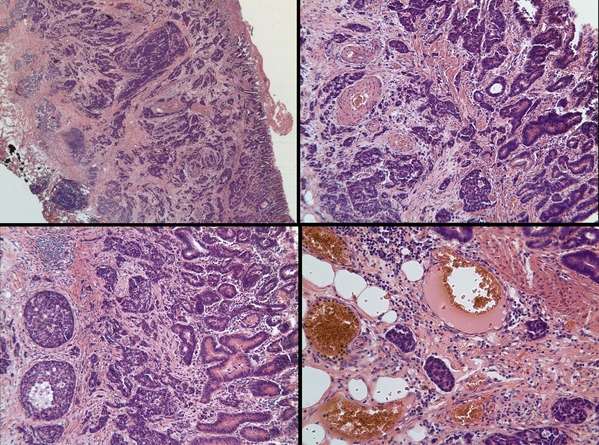Correct answer: e.
Discussion
This is a somewhat peculiar looking gastric lesion that is composed of a pale part and more erythematous, indurated part. The lesion is clearly malignant and has an ominous-looking nodularity in the centre and a more infiltrative edge.
The pale part of the lesion corresponded to the poorly differentiated part of this gastric cancer, whilst the moderately differentiated part of the cancer corresponded to the more erythematous part.
The photographs below show the histological findings for the lesion and reveal something unexpected.

Please log in with your myUEG account to post comments.